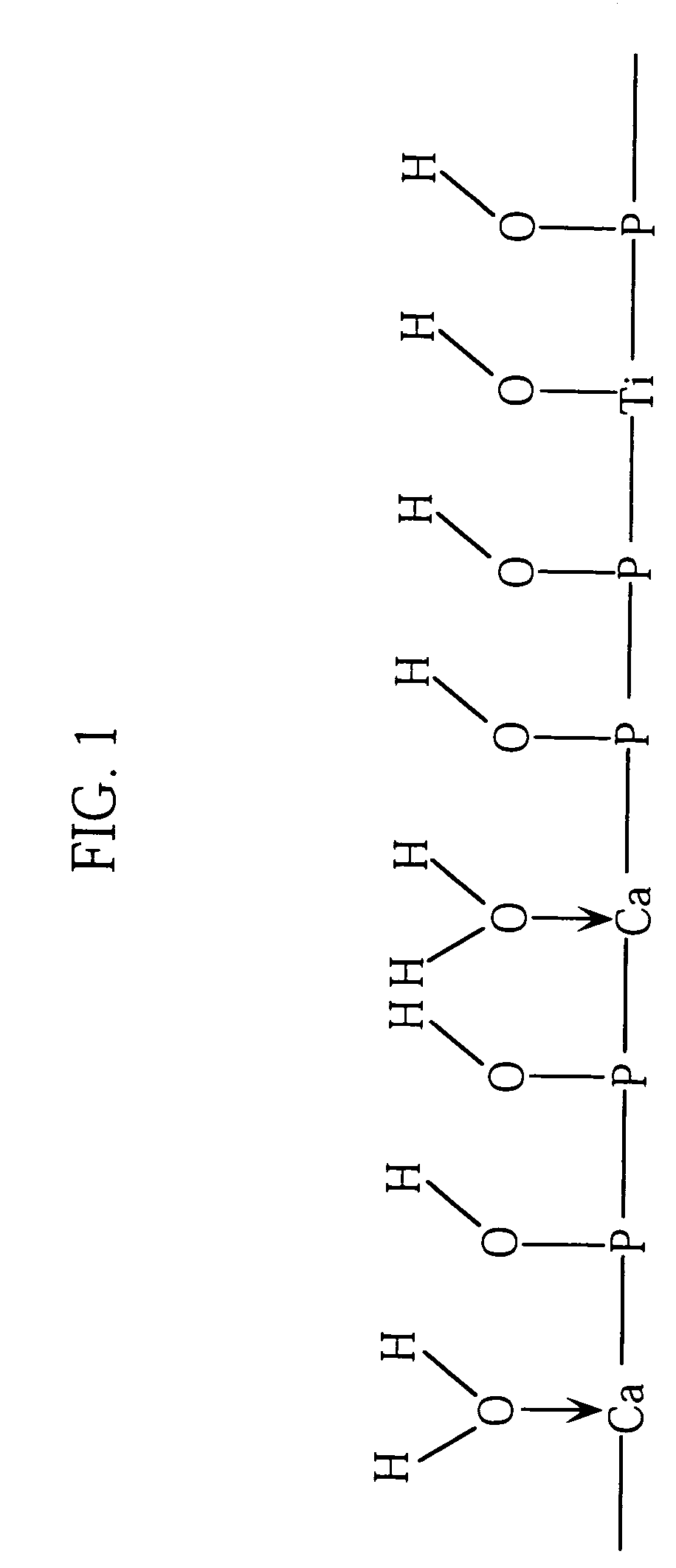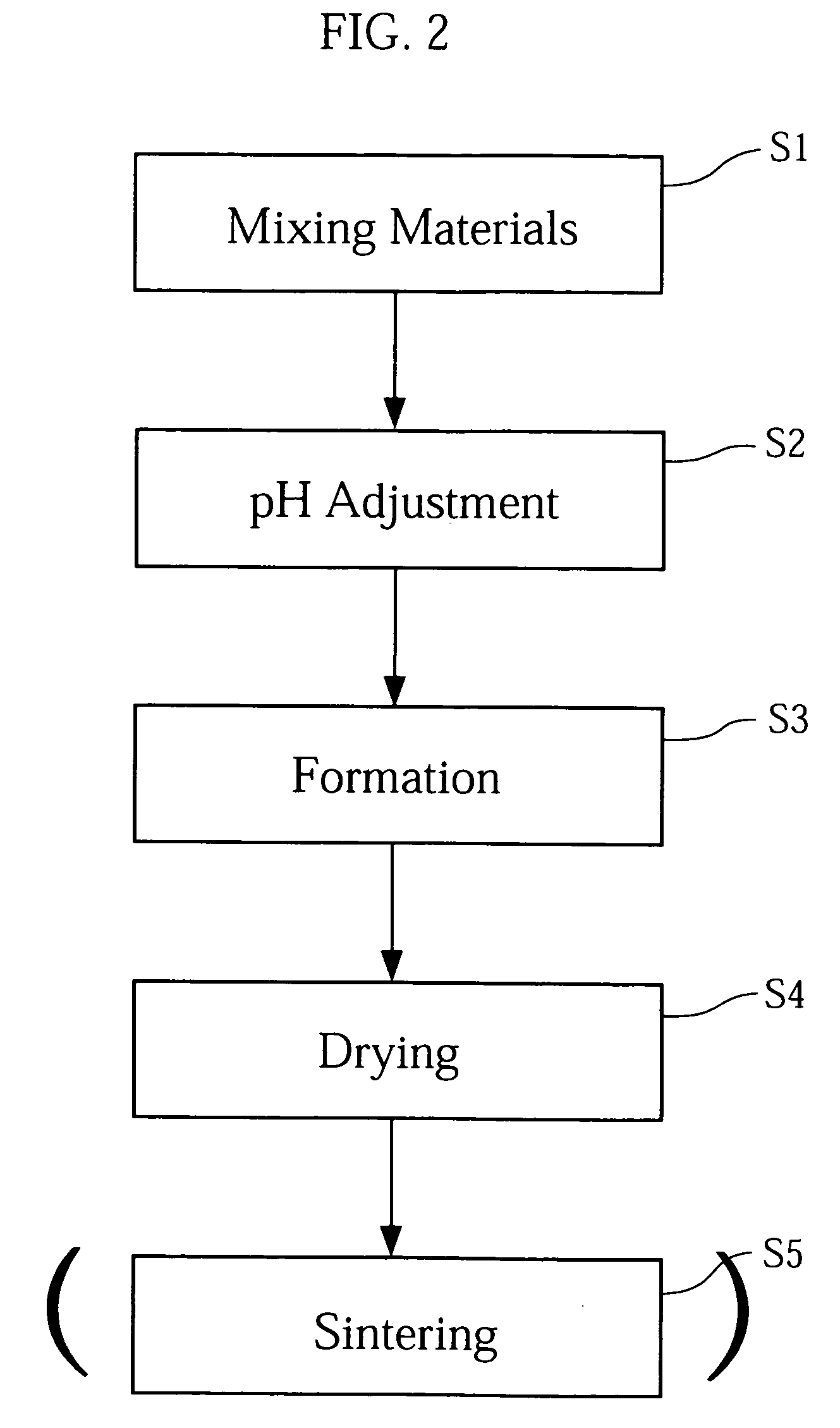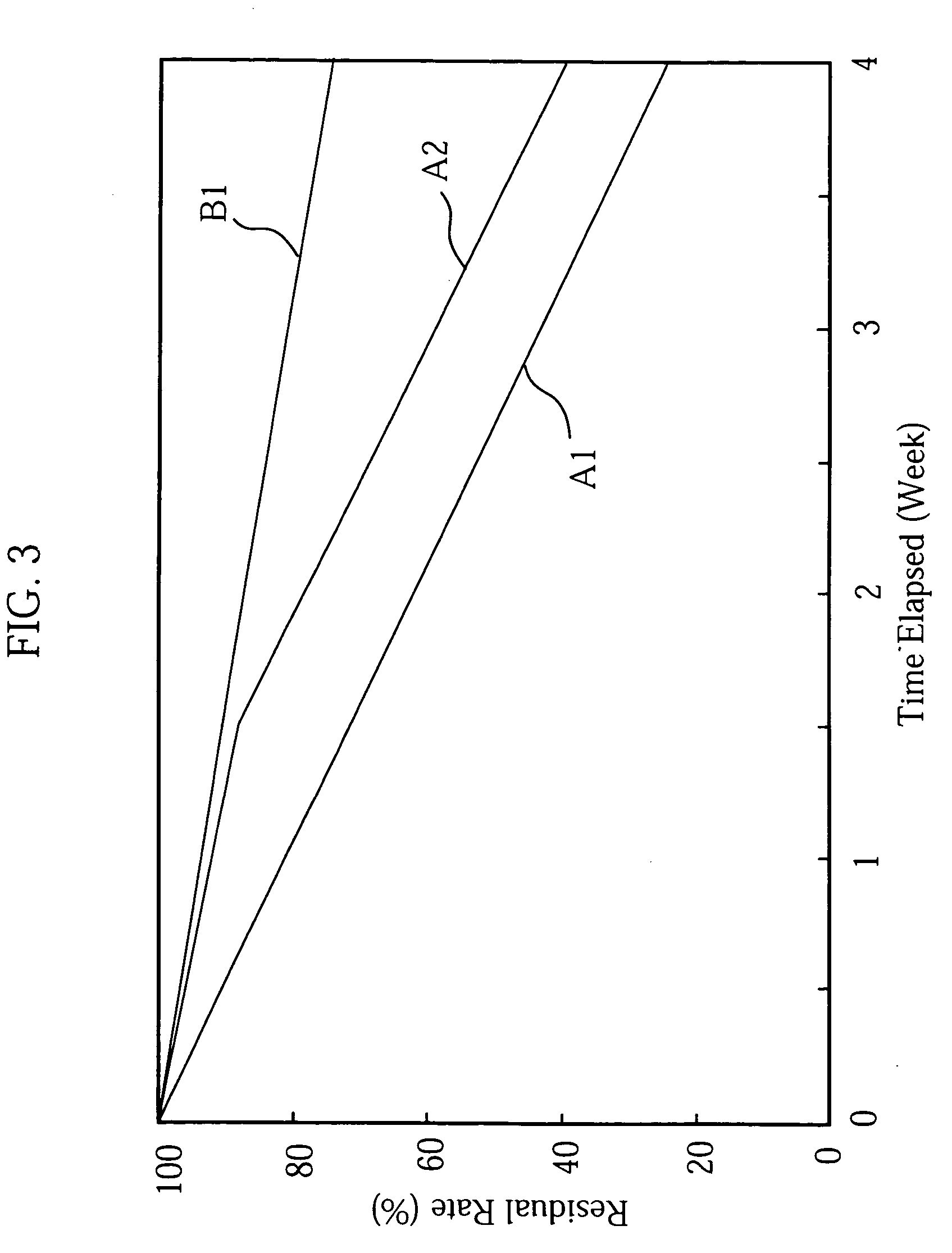Agricultural chemical component and decomposer for residual agricultural chemical
- Summary
- Abstract
- Description
- Claims
- Application Information
AI Technical Summary
Benefits of technology
Problems solved by technology
Method used
Image
Examples
example 1
Fabrication of a Residual-Agricultural-Chemical Decomposer
[0050] In the present Example, Ti—Ca HAP was made as the metal-modified apatite which serves as a residual-agricultural-chemical decomposer. In the fabrication of Ti—Ca HAP, a liter of decarbonated pure water was prepared. To this pure water, calcium nitrate, titanium sulfide and phosphoric acid were added and mixed in nitrogen atmosphere. The concentration of calcium nitrate was adjusted to 0.09 mol / L, the concentration of titanium sulfite was adjusted to 0.01 mol / L whereas the concentration of phosphoric acid was adjusted to 0.06 mol / L. Next, the pH of the raw material solution was adjusted to 9.0 by adding ammonia water of the 15 mol / L. Next, the raw material solution was aged at 100° C. for six hours. Through these operations, the metal-modified apatite occurred and precipitated in the raw material solution, and the raw material solution became a suspension. The suspension was filtered, and the separated deposit was clea...
example 2
[0053] In the present Example, a residual-agricultural-chemical decomposer was prepared by coating the same Ti—Ca HAP powder as in Example 1 with gelatin. Specifically, first, gelatin was dissolved into water which has been heated to above 50° C., so that the final concentration would be 0.1 g / L. Next, the same Ti—Ca HAP powder as in Example 1 was added to the solution, and mixed for an hour under heating, thereby having Ti—Ca HAP particles adsorb the gelatin. Next, the Ti—Ca HAP was separated by filtration, and dried to obtain Ti—Ca HAP powder coated with a 0.1-μm gelatin film. A residual-agricultural-chemical decomposer according to the present Example was thus fabricated. An agricultural chemical solution (Brand name: Sumithion, manufactured by Takeda Engei Co., Ltd.) which contains fenitrothion as an active agricultural chemical ingredient was diluted with water to 1000 times. To the diluted solution, the Ti—Ca HAP powder obtained as the above was mixed at a rate of 10 wt %, to ...
PUM
 Login to View More
Login to View More Abstract
Description
Claims
Application Information
 Login to View More
Login to View More - R&D
- Intellectual Property
- Life Sciences
- Materials
- Tech Scout
- Unparalleled Data Quality
- Higher Quality Content
- 60% Fewer Hallucinations
Browse by: Latest US Patents, China's latest patents, Technical Efficacy Thesaurus, Application Domain, Technology Topic, Popular Technical Reports.
© 2025 PatSnap. All rights reserved.Legal|Privacy policy|Modern Slavery Act Transparency Statement|Sitemap|About US| Contact US: help@patsnap.com



